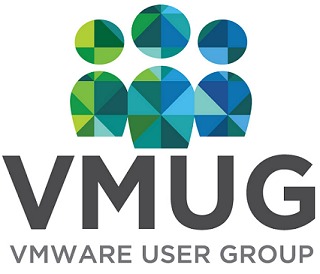I spent yesterday attending the Seattle stop of the VMware User Group (VMUG) Conference. It was a totally worthwhile event for catching up with all that is going on in the VMware world. If you didn't already know Puget Systems has been a VMware Partner for quite some time now, we even use a number of their products to run Puget Systems.
Why the VMUG?
I am a total noob in the virtualization world. The sum total of my experience is setting up a few virtual machines in VMware Player and converting an old root installation into a VM. But, even with a limited knowledge of the technical side of VMware, it was easy to see some pretty cool things going on in the virtualization world.
Now, I know there are other VM solutions out there, and many complain about the cost of VMware, but I don’t think you can beat the value VMware brings to the table.
There is a lot of thought put into their products and the ease of use make it compelling for this Puget employee. I like things simple, See Spot Run simple.
The one thing that really drove me nuts at the conference was the lack of WiFi availability. Connectivity was widely available, but the conference didn't provide any access to the network. Maybe they forgot to pay the bill. I know, I know, #firstworldproblems.
Flash, IOPS and good books
This was my second year attending VMUG Seattle and it was interesting to see how things have changed in the last year.
It was clear that the hot thing right now is flash storage. A vendor, Tegile, gave me an excellent little book titled, Flash Storage Virtualization for Dummies. I told you, See Spot Run simple, that’s how I roll.
The issues of IOPS, latency and transfer size are always hot topics at these events, and the big problem solver right now is flash storage.
Side note: Whenever I hear “flash storage” I can't help but think of Flash Player…
I digress.
Take a minute to hear from two competitors and you will learn that storage benchmarks, well any benchmarks really, need to be viewed in a broader context and with a firm understanding of their methodology. Listening to one presentation, we were immediately informed to ignore the vendor's own benchmarking claims. "Take the IOPS and cut them in half, you will be much closer to reality," said the refreshingly frank engineer.
Amongst other great takeaways from the vendor area was a book titled, vSphere Design Pocketbook, by PernixData. Billed as “tweet-sized design considerations for your software designed datacenter,” this book is a nice collection of little nuggets of vSphere wisdom.
VMs for everyone
Now you don’t need to have massive size to benefit from virtual machines. We run a few physical servers, each loaded up with a dozen or more virtual machines. Richard recently consolidated a number of machines at his home into a single Obsidian system with VMware ESXi as the base operating system. The reliability of the Obsidian, coupled with the simplicity of virtual machines, has made this move a real winner for Richard.
Simplicity, that is probably the hardest thing for people to wrap their heads around when considering the switch to virtual machines.
How can running multiple logically separated systems on one box be a simple solution? Think of the reduction in hardware space and expense, the reduced chance of hardware failure (especially with an Obsidian or Peak Stacker) and the ease of launching a new system with a few clicks. We use VMs for our phones, chat, email, business system and many other functions around the office.
If you are interested in talking about how virtual machines can help you out in your specific situation, feel free to email me at [email protected]. I would love to talk shop.
